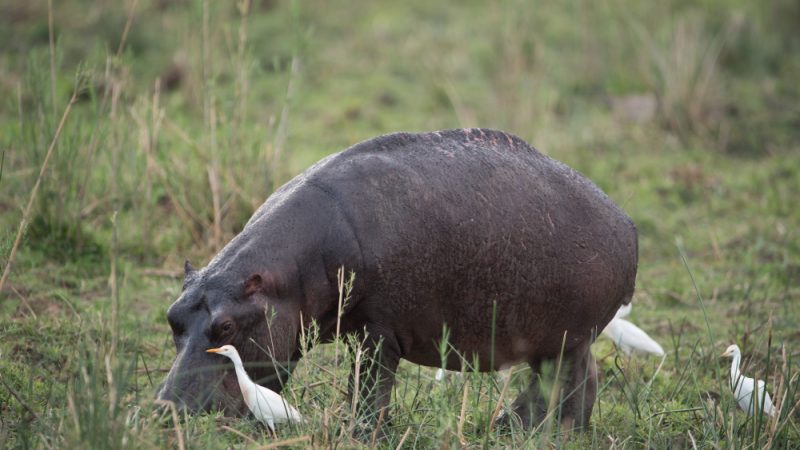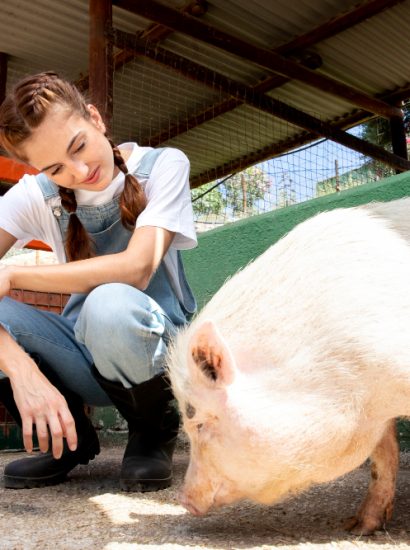Wild hogs, also known as feral hogs, wild boars, or feral pigs, are among the most fascinating yet dangerous animals found in many parts of the world. Known for their adaptability and strength, these animals have one particularly distinctive feature—their tusks.
Tusks are more than just impressive teeth; they are tools, weapons, and a key part of a hog’s survival. For hunters, farmers, and wildlife enthusiasts, understanding the role of tusks is essential to grasp the full picture of wild hog behavior and the potential dangers they pose.
This article takes a closer look at wild hog tusks, covering their biology, growth, purpose, and why they can be dangerous for both animals and humans.
What Are Wild Hog Tusks?
Tusks are elongated canine teeth that grow continuously from the upper and lower jaws of wild hogs. Unlike ordinary teeth, tusks do not stop growing; instead, they sharpen and lengthen throughout the hog’s life.
- Upper tusks are shorter and curve downward.
- Lower tusks, also called “cutters,” are longer and sharper.
Together, these tusks create a self-sharpening system that makes them formidable weapons.
How Do Tusks Develop in Wild Hogs?
Wild hog piglets are born without visible tusks. The canine teeth begin emerging at around 6 to 8 months of age.
- By 1 year old, tusks are noticeable but still small.
- By 2 to 3 years, tusks become sharp and dangerous.
- In mature boars, tusks can grow several inches long.
Because they grow continuously, tusks are often worn down by use, chewing, and natural sharpening against other tusks.
Differences Between Male and Female Tusks
Tusks are present in both male and female wild hogs, but they are not equal in size or strength.
- Boars (males): Have much larger, sharper tusks that can grow 3 to 5 inches or more.
- Sows (females): Have smaller, less pronounced tusks, usually not visible outside the mouth.
The tusks of male hogs are primarily used for fighting, dominance, and defense, whereas female tusks play a much smaller role.
The Purpose of Wild Hog Tusks
Tusks serve multiple functions for wild hogs:
- Defense: Tusks are natural weapons against predators and rivals.
- Fighting: Male hogs use tusks during battles for territory or mates.
- Feeding: Though not their main tool, tusks help with digging and rooting.
- Survival: Tusks are intimidating to enemies and can inflict serious injuries.
For wild hogs, tusks are essential survival tools in their often harsh environments.
The Growth and Sharpening Process
One of the most fascinating aspects of hog tusks is their self-sharpening ability.
The upper and lower tusks rub against each other constantly, creating a razor-sharp edge. This natural sharpening process makes them incredibly effective in fights.
This explains why even older boars, whose tusks have been worn down over time, can still use them as powerful weapons.
Dangers of Wild Hog Tusks to Humans
Wild hogs are not usually aggressive toward humans unless provoked, but when they do attack, tusks can be deadly.
- Injuries: Tusks can slash through clothing and skin, causing deep lacerations.
- Speed: Hogs charge quickly, making it difficult to avoid an attack.
- Strength: Combined with their weight, tusks make hogs dangerous opponents.
- Disease Risk: Wounds from tusks may become infected or transmit bacteria carried by hogs.
Hunters, farmers, and hikers in hog territory must exercise extreme caution.
Wild Hog Tusks in Hunting and Culture
For hunters, tusks are both a trophy and a warning. Large tusks symbolize the strength and age of a hog. In many cultures:
- Tusks are kept as souvenirs or mounted displays.
- They are used to measure hunting success.
- Some traditions view tusks as symbols of power and bravery.
While admired for their rugged beauty, tusks also remind hunters of the risks involved in confronting wild hogs.
Differences Between Domestic and Wild Hog Tusks
Domestic pigs, which descend from wild hogs, have the same genetic potential for tusk growth. However:
- Domestic pigs rarely develop large tusks because they are not needed for survival.
- Many domesticated pigs have tusks trimmed or removed for safety reasons.
- In the wild, tusks grow larger due to natural selection and survival needs.
This difference highlights how environment plays a major role in tusk development.
Managing Wild Hog Populations and Tusks
Wild hogs are considered invasive pests in many regions, particularly in the United States. Their tusks make them difficult to manage because:
- They pose risks to farmers and livestock.
- They make hogs more aggressive during trapping or hunting.
- Tusks can injure dogs used in hog hunting.
Population control methods—such as regulated hunting, trapping, and land management—are crucial to reduce the dangers associated with wild hog tusks.
Fascination with Wild Hog Tusks
Despite the dangers, wild hog tusks remain a subject of fascination. For biologists, they represent a unique adaptation. For hunters, they are prized trophies. For farmers, they are a constant reminder of the risks wild hogs bring to agriculture.
Tusks are not just teeth—they are a symbol of survival, power, and danger in the wild.
Conclusion
Wild hog tusks are one of nature’s most remarkable survival tools. From their continuous growth to their role in self-defense, feeding, and fighting, tusks are central to the life of a wild hog.
While they command respect and admiration, tusks are also dangerous, capable of inflicting serious injuries on humans and animals. For anyone living or working in hog country, understanding tusks is key to both appreciating these animals and protecting yourself from potential harm.
Whether studied in biology, admired as hunting trophies, or feared for their destructive power, wild hog tusks will always remain one of the most fascinating features of these resilient animals.
FAQs
1. How big can wild hog tusks grow?
Male hogs’ tusks can grow up to 3 to 5 inches, while female tusks are much smaller and less visible.
2. Do all wild hogs have tusks?
Yes, both males and females have tusks, but males develop much larger and sharper ones.
3. Are wild hog tusks dangerous to humans?
Yes, tusks can cause deep, life-threatening injuries if a hog charges or attacks.
4. Do wild hogs use tusks for feeding?
Occasionally, tusks help in rooting and digging, but they are mainly used for fighting and defense.
5. Can domestic pigs grow tusks like wild hogs?
Yes, but they are often smaller and may be trimmed or removed in farm environments.
Also read: Fluid Mosquito Repellent – Effective Protection Against Bites









